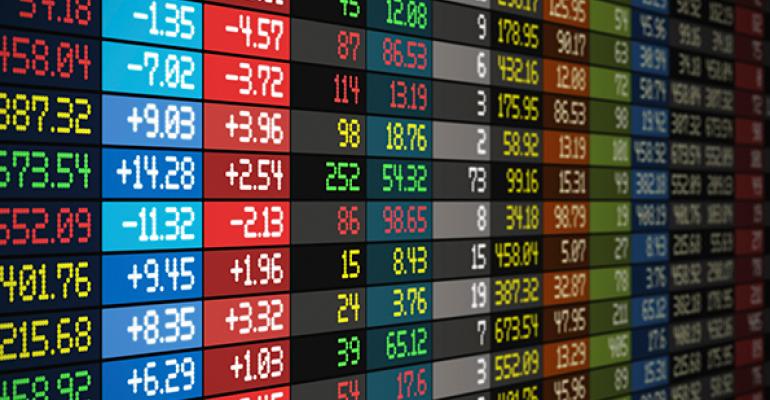By Carolina Wilson and Dani Burger
(Bloomberg) --Investors in exchange-traded funds are done with corporate bonds.
At least that’s what you see in the recent flow numbers. Almost $1.4 billion fled three popular debt ETFs in the middle of the week, according to Bloomberg data. Among them is the largest ETF tracking high-yield bonds, the iShares iBoxx $ High Yield Corporate Bond ETF ( HYG), which recorded outflows of $715 million, the most since a three-week selloff over a month ago.
But that fund isn’t alone. The iShares investment grade corporate bond ETF known as LQD saw $424 million of outflows over those two days. And the iShares 1-3 Year Credit Bond Fund, ticker CSJ, saw its largest pullback since June 2014, as buyers removed $230 million from the fund in that period.

Still, other fixed-income ETFs have been feeling the love, as buyers may be moving money out of credit and into Treasury funds.
Between jitters from the tax bill, policy tightening and a fast approaching debt ceiling deadline, short-term rates have skyrocketed. But for some intrepid U.S government debt investors, now is the time to place bullish bets.
The iShares Short Treasury Bond ETF ( SHV) has seen shares outstanding advance 7.9 percent so far this week, reaching the highest level since its creation in 2007, according to data compiled by Bloomberg. The fund absorbed nearly $500 million on Tuesday, it’s biggest daily inflow in about two years, the data show. A similar product, the iShares 1-3 Year Treasury Bond ETF ( SHY), took in $235 million on Tuesday and Wednesday.
This fresh cash appears to be the result of a pretty specific trade, according to Josh Lukeman, head of delta one trading for the Americas at Credit Suisse Group AG.
“Looks like a one-off allocation, perhaps from one big asset manager,” he said, “as opposed to a direct opinion on the steepening trade.”
Changes Coming
It’s a bet that stands in direct opposition to market moves over the past few days. As investors focus on efforts to avert a U.S. government shutdown and a growing consensus that the Federal Reserve will raise rates again this month, yields on ultra-short Treasuries have shot up. Especially sensitive to changes in interest rates, the yields on 12-month Treasuries have advanced to their highest level since 2008.
Though a few days doesn’t equal a trend, this week’s action may be evidence that one or more investors are gearing up for a change of pace.

“This is a hedge against risk,” said Andrew Brenner, head of international fixed income at Natalliance Securities in New York. “It could be a hedge against the equity market because if equity markets fall, the yield curve steepens.”
To be sure, shares outstanding can rise along with short interest demand, as market makers snap up the security to appease bearish clients. However, that’s not the case this time. Short interest relative to the float sits at 0.33 percent, far below the 9 percent record reached in October, data from S3 Partners show.
“I am not sure why there has been such a sudden rush into this ETF, with a 98 percent probability of a Fed hike on the 13th,” Ihor Dusaniwsky, head of research at S3, said in an email. “But this is purely long (bullish) trading, nothing to do with the short side.”
--With assistance from Rachel Evans.To contact the reporters on this story: Carolina Wilson in New York City at [email protected] ;Dani Burger in London at [email protected] To contact the editors responsible for this story: Jeremy Herron at [email protected] Eric J. Weiner, Andrew Dunn





